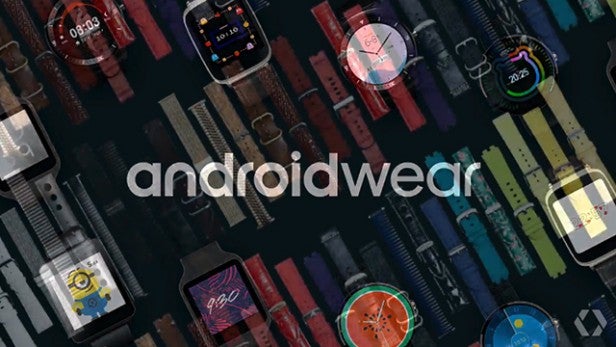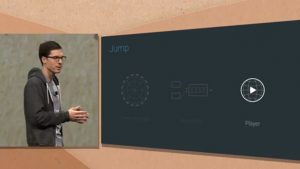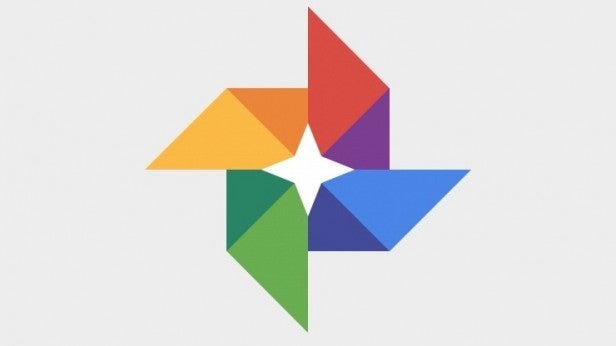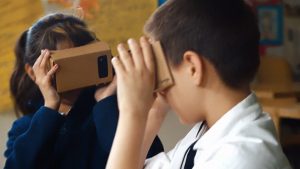Google I/O 2015: Everything that happened

What is Google I/O? It’s the place where we find out about the future of Android and a whole lot more.
Google I/O is an annual conference for developers who use Google software, but it’s also particularly interesting for us, as it gives us a glimpse into the future of Google’s biggest products.
Here’s a breakdown of everything that was revealed at this year’s show.

Android M
While the software’s full title has yet to be disclosed, the search giant has outlined a number of new Android M-bound features. The smartphone software is set to bring the whole Google ecosystem closer together, as well as bringing a few handy-looking power features.
Instead of introducing headline new functionality, Google has confirmed that Android M will focus largely on “making everything work better together”.
“This year we have made a conscious decision to focus on quality, end to end,” said Google’s Vice President of Engineering, David Burke. “The central theme of M is improving the core user experience of Android. Our focus is on product excellence.”
Follow the link below for all the juicy details.
SEE ALSO: Android M features: What’s new?

Android Wear
From wrist gestures and always-on apps to a new launcher and an emoji recogniser, the upcoming update to Android Wear will help bring the platform’s series of supported devices closer to the market-leading Apple Watch.
The upcoming update will see owners of devices such as the Moto 360 and LG Watch Urbane able to scroll through app screen and menus, simply by twisting their gadget adorned wrists up and down. It should prove handy when struggling with baggage or when sporting grubby digits.
Another benefit of the upcoming Android Wear update will see always-on apps introduced. Utilising a low-power mode, features such as navigation directions or shopping lists can be retained on screen for long periods without hammering the wearable’s minimalist battery life.
Google also revealed that there are now more than 4,000 dedicated apps in the Android Wear store, including three huge ones…
SEE ALSO: Android Wear brings new gestures and major apps
Project Brillo and Google Weave
Named after a scouring pad, Project Brillo is an Android-based platform, the software that Google wants to end up powering the Internet of Things. That means it’ll end up in all sorts of smart home devices. Within a few years just about every appliance you can think of will have a smart equivalent, from coffee machines and microwaves to ovens and door locks.
Weave, meanwhile, is the library of terms and commands that will be used universally among supported devices. It’s a common language for IoT devices and developers will be able to submit their own terms to become part of the language. It’s what Google no-doubt wants to become the standard across the entire industry.
SEE ALSO: What are Project Brillo and Google Weave?

YouTube VR
Google has announced a dedicated virtual reality ecosystem that will mean you’ll soon be able to play virtual reality content on YouTube. The company revealed the ‘Jump’ platform at its annual Google I/O developer conference, marking further commitment to the VR space.
So what is Jump? It’s basically an end-to-end system for producing virtual reality content, and comes in three core parts. The first part is the camera rig; Google has designed a 360-degree rig that supports 16 cameras, to film completely 360-degree footage. Read about the other two via the link below.
SEE ALSO: Google Jump and GoPro bringing virtual reality to YouTube
Now on Tap
Google has detailed a brand new feature of Android that will see the operating system’s Now digital assistant become a veritable genius. It’s called ‘Now on Tap’ and it will be debuting with Android M, a major software update that’s due to launch later this year.
While Google Now offers information based on simple requests, Now on Tap is designed entirely around context.
“Your smartphone ought to be smarter,” explained Aparna Chennapragada, Director of Google Now, adding: “In a different context, you need different things.”
SEE ALSO: ‘Now on Tap’ gives Android the power of context

Google Photos
Having been teased in recent weeks, Google Photos is now not only official, but already available for use, with the search giant confirming its innovative Dropbox rival will launch immediately.
Offering unlimited, fee-free image storage, Google Photos is available across all of your connected devices and offers seamless image storage, cataloguing, and sharing options.
The app-based service will access all of your device-shot images and videos, instantly backing them up to the cloud service. From there, you’ll be able to log in to any device, accessing your categorised images.
What’s more, to make it easier to sift through years of images, you can pinch to zoom in and out of a date-based image timeline, or make use of Google’s Machine Learning search algorithms to pick out certain memories.
SEE ALSO: Google Photos offering unlimited free image storage

Android Pay
Google has just announced a new mobile payment platform for the Android operating system called Android Pay, and it’s being positioned as a direct – and not too subtle – rival to Apple Pay on iOS.
It will work in much the same way as Apple Pay, insofar as that you can make payments at contactless terminals with any phone that has NFC capability. Both Visa and MasterCard have already confirmed that they have partnered with Google and will be supporting Android Pay.
SEE ALSO: Google announced Android Pay with fingerprint support

Cardboard in the classroom
Google has revealed it has major plans to bring virtual reality to education. The company has created an education package the gives teachers all the tools they need to utilise VR in schools.
Designed as a replacement for the humble, yet ailing school bus, Google Expeditions is the future of field trips. Expeditions effectively lets teachers take their classes on outings to anywhere on the planet.
Interested? Follow the link below.
SEE ALSO: Google bringing Cardboard to the classroom
Offline Maps
Whether you’ve run out of data, are in a dodgy reception area or are just abroad and don’t want to spend a fortune on roaming fees, you will now be able to use Google Maps to find out where you are and get where you need to be. Find out how, via the link below.
SEE ALSO: Google Maps to work offline
What were you hoping to see at this year’s Google I/O? Let us know in the comments section below


